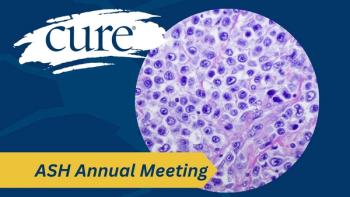
Heart Issues After Breast Cancer Radiation: Left Side Has Twice the Risk
Coronary artery disease was far more common in young women with breast cancer who had radiation to their left breast than in those who had it to their right.
Young women who receive radiation therapy to their left breast – where their heart is located – have more than twice the risk of developing coronary artery disease than those who had radiation to their right side.
“Coronary heart disease is something that increases in risk as women age, generally in the population. Most previous studies have focused on the average breast cancer survivor population that is a bit older – in their 60s and 70s, on average. We were interested in whether this effect among younger, typically healthier women was also present. And we found that it was,” said Gordon P. Watt, a postdoctoral research fellow in the department of epidemiology and biostatistics at Memorial Sloan Kettering Cancer Center, in an interview with CURE®. Watt is a co-author of recent research that analyzed the risk of coronary artery disease in women with breast cancer between the ages of 25 and 54.
The study included 972 women who underwent radiation therapy for breast cancer: 466 had it on the right side and 506 on the left. Average age at diagnosis for both groups was 46, and each group was followed up with for 14 years.
There were more than twice as many cardiac events observed in women who received left-breast radiation (32 events) compared with those who received right-breast radiation (14). The increased risk for heart complications was seen regardless of risk factors that study participants had, including smoking or body weight.
Given these findings, women of all ages may want to advocate for continued follow-up and survivorship care after radiation treatment for breast cancer.
“(Coronary artery disease) should be continually monitored in the years of survivorship following breast cancer diagnosis and treatment,” the study authors wrote. “As additional cardiovascular risk factors may emerge as younger women age during survivorship, these risk factors and resulting cardiovascular disease should also continue to be monitored and assessed in this population.”
Watt emphasized, however, that while this study may lay the groundwork for more careful follow-up, patients and doctors should not stray away from radiation therapy because of these data.
“I would like to stress that breast radiation therapy is the most effective treatment for breast cancer,” Watt said. “And our findings have implications for long-term follow-up, not for breast cancer treatment.”
There are still unanswered questions regarding coronary artery disease and breast cancer radiation that future research should address, as well as more recent follow-ups for women with breast cancer.
“This population (analyzed in the study) was diagnosed with and treated for breast cancer between 1985 and 2008. Since then, there have been some modifications to radiation therapy. We cite a paper detailing some of those techniques that may reduce the incidence of radiation dose to the heart,” Watt said. “What is needed now are studies with detailed cardiac dissymmetry or estimations of radiation dose absorbed by particular structures in the heart, and seeing how those doses of radiation are associated with particular cardiovascular endpoints.”
For more news on cancer updates, research and education, don’t forget to





